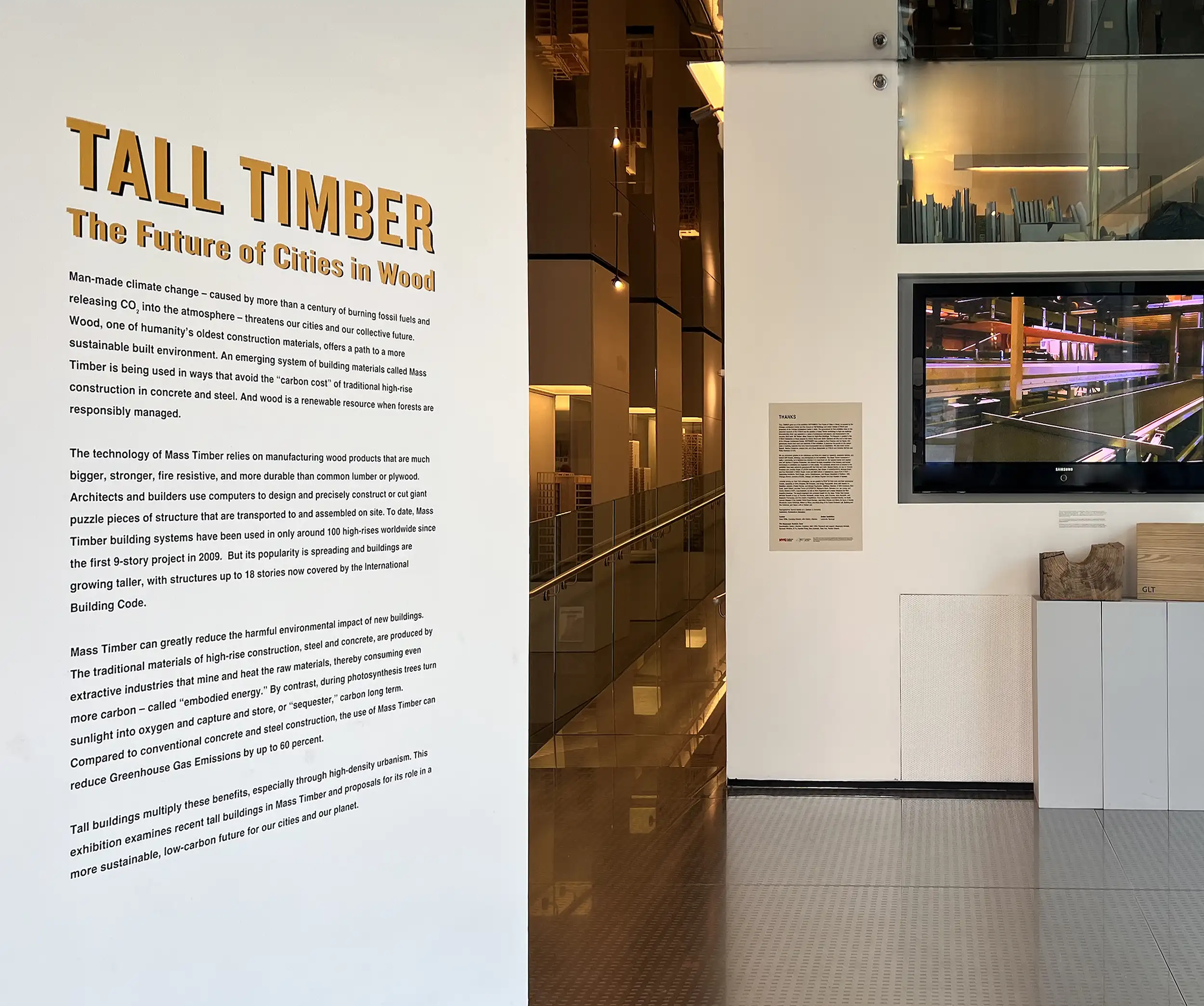
Photo courtesy The Skyscraper Museum
Mass timber is a new take on an age-old building material. The construction system, based on engineered wood components that are stronger and more fire-resistive than dimensional lumber, has been gaining momentum over the last 15 years as an alternative to concrete or steel, in no small part due to its carbon-storing potential. Now, Tall Timber: The Future of Cities in Wood, an exhibition at New York’s Skyscraper Museum, documents the material’s rise and its promise.
The exhibition grew out of the similarly named Reframed: The Future of Cities in Wood, mounted at the Chicago Architecture Center last year. But Carol Willis, the Lower Manhattan museum’s director, says the focus of Tall Timber is more urban than the earlier exhibition. “Our agenda was exploring the application of mass timber, which is so much better for the environment [than steel or concrete], at density and at scale.”
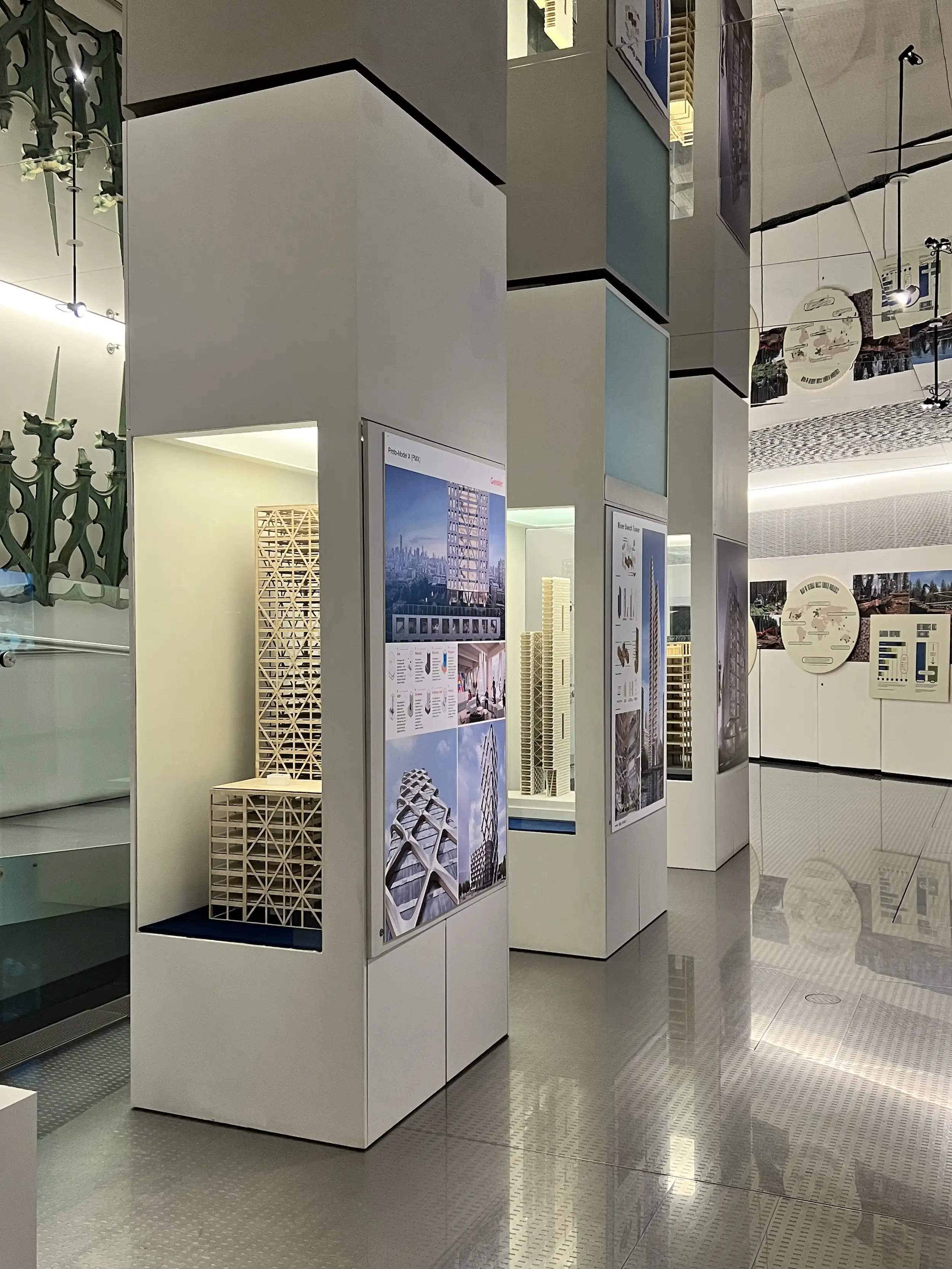
Photo courtesy The Skyscraper Museum
Focusing primarily on the work of North American architects, the show chronicles the relatively young construction system through a variety of media. Among Tall Timber’s displays are samples of mass-timber products, including glue-laminated timber (glulam), cross-laminated timber (CLT), and dowel-laminated timber; videos showing how such components are fabricated, tested, and assembled into buildings; and projects—both theoretical and built—are documented in drawings, photographs, and in scale models.
Some of the standouts of the show are in this last category, including a model of the 42-story hybrid tower for the software company Atlassian, designed by SHoP Architects and now under construction in Sydney next to the city’s heritage rail station. The model is illuminated from within to show off the structure which combines a steel diagrid with an interior glulam and CLT framework. The mockup of KPF’s Burrard Exchange, a 260-foot-tall concrete and mass-timber building proposed for Vancouver, B.C., is equally illustrative. It slices through a portion of the building, showing the CLT floor slabs in section. The parts representing the mass-timber elements have been 3D printed, but fittingly, the printing media is made of wood fiber.
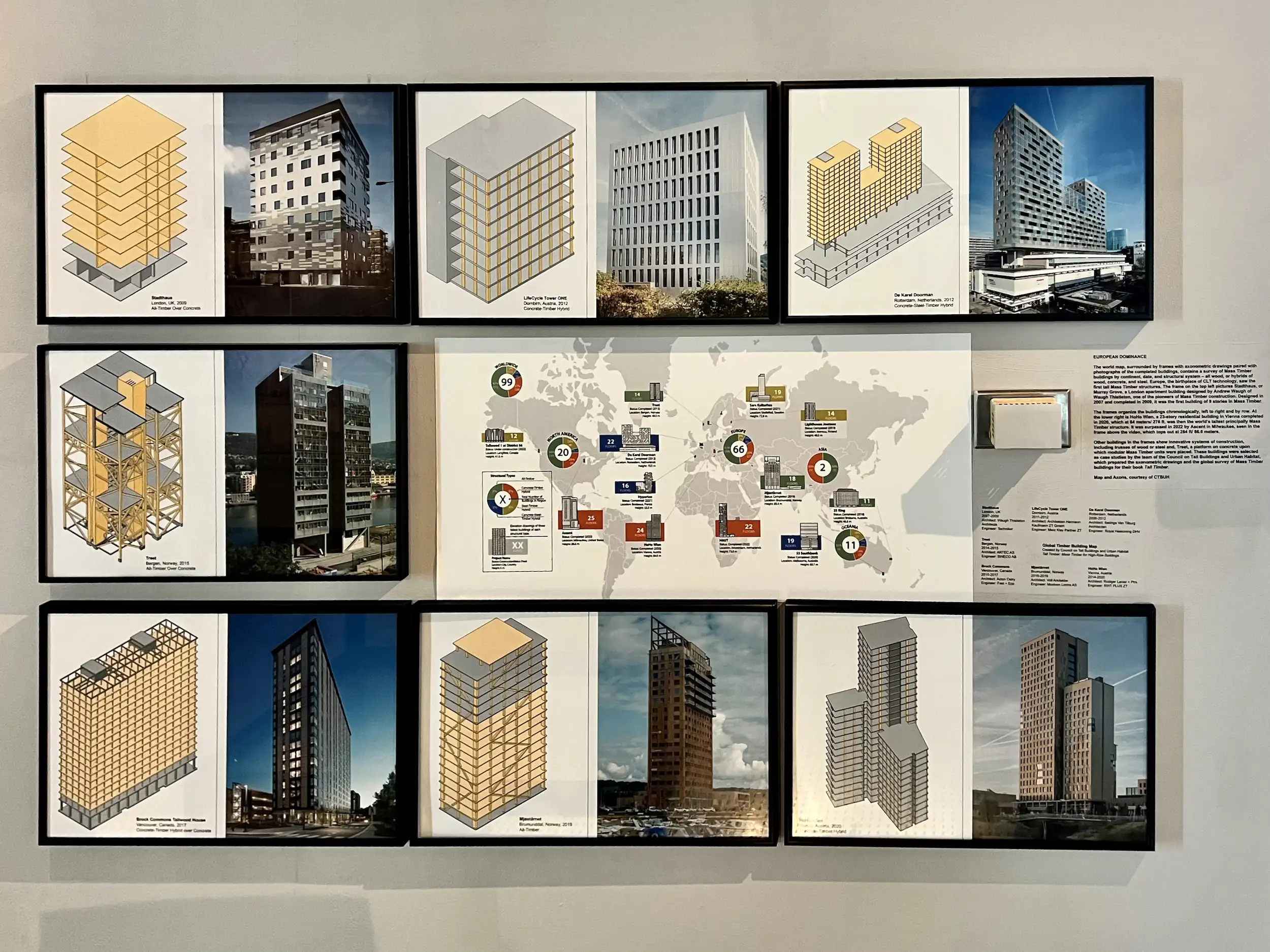
World map of tall mass timber buildings by the Council of Tall Buildings and Urban Habitat. Photo courtesy The Skyscraper Museum/em>
The assemblage of the exhibits produces some informative synergies. For instance, the two winners of a 2015 national competition for the U.S. Tall Wood Building Prize are displayed not far from each other: LEVER Architecture’s 12-story mixed-use Framework, in Portland, Oregon, and SHoP’s 10-story apartment building designed for a site next to New York’s High Line. Neither scheme was built, but Framework came close, earning a building permit and $1.5 million R&D grant from the competition’s sponsors—the U.S. Department of Agriculture, the Softwood Lumber Board, and the Binational Softwood Lumber Council. The funds helped offset extensive research, including full-scale testing of its “rocking wall” core, designed to self-center after an earthquake. Per the competition’s rules, all the data collected became part of the public domain, helping advance future mass timber projects.
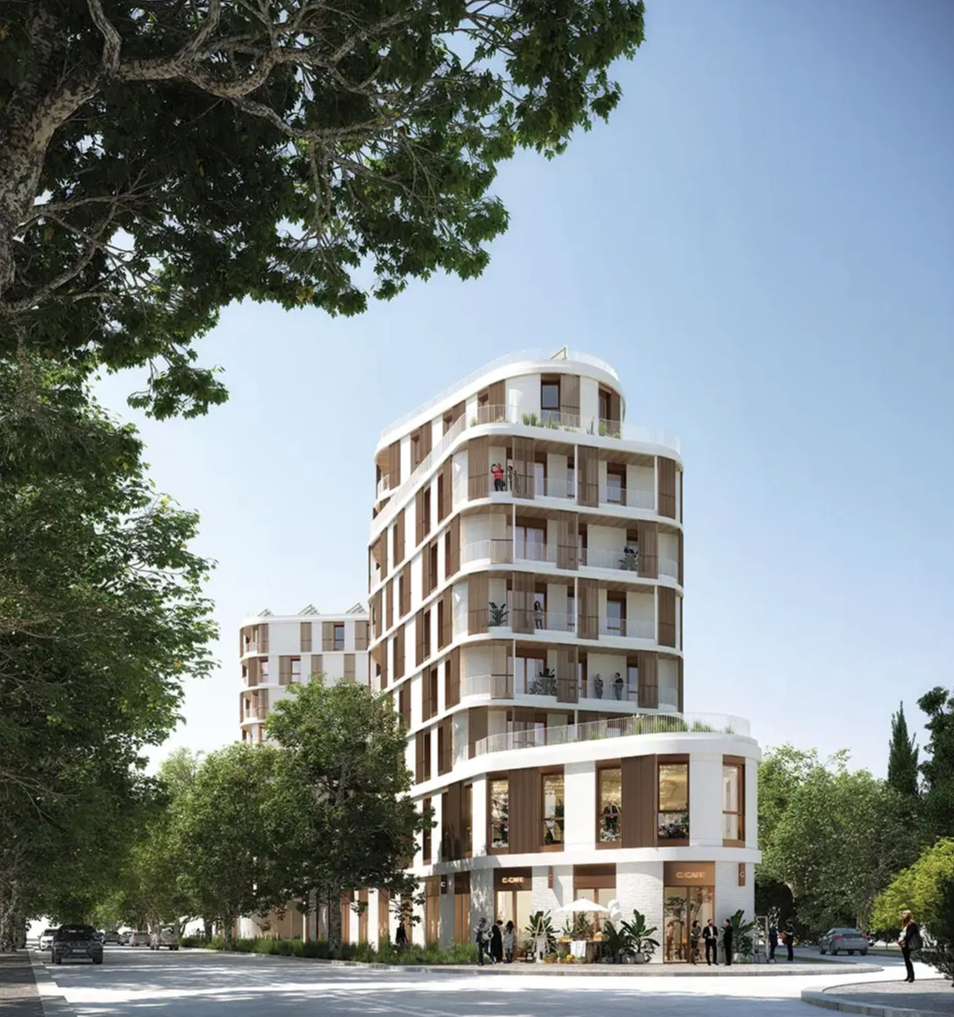
1
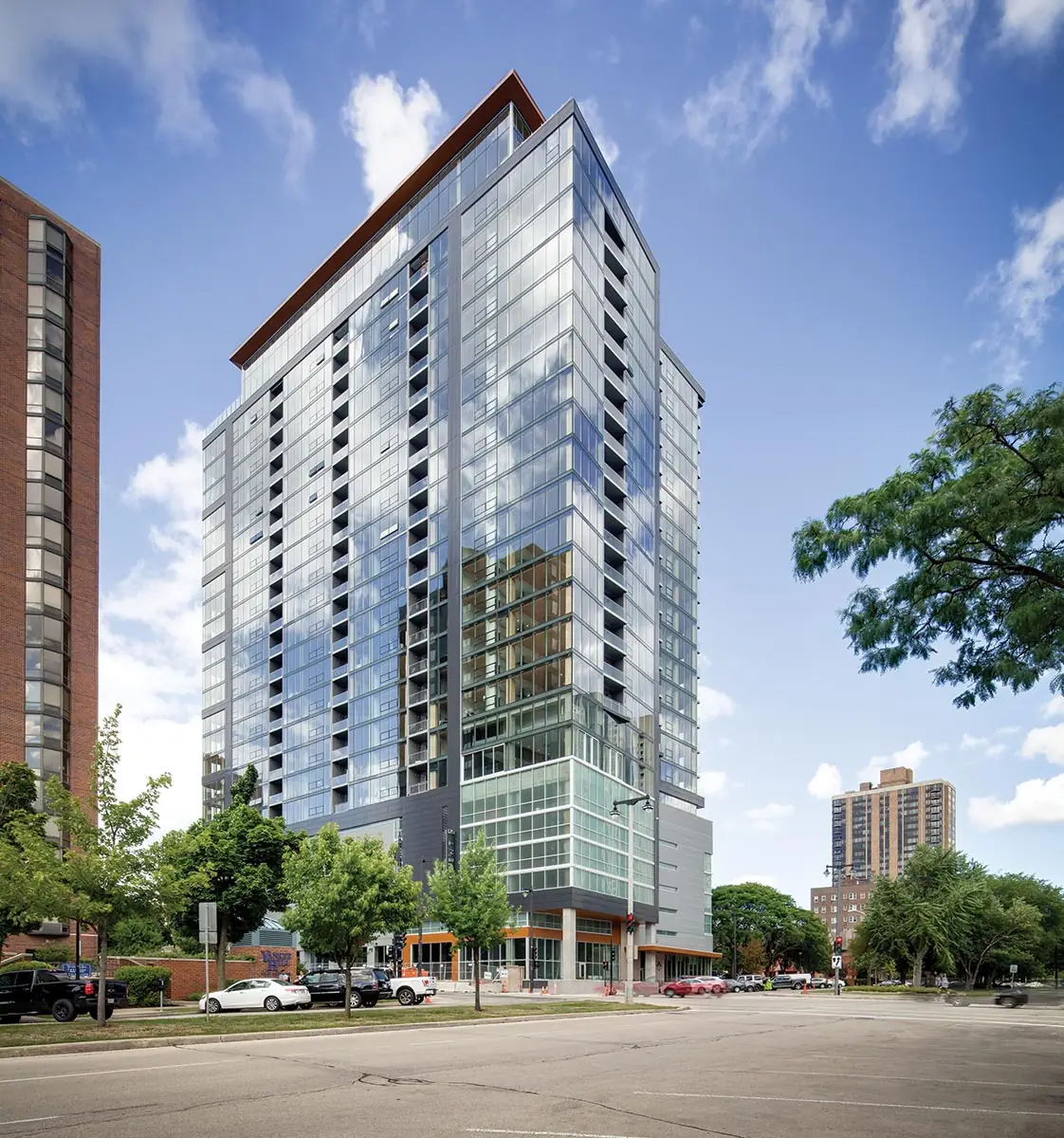
2
Projects featured in Tall Timber include MGA's Flora (1) in suburban Paris and Ascent (2) in Milwaukee by Korb Associates Architects. Images courtesy MGA (1) and Korb Associates Architects (2)
Tall Timber also includes artifacts, such as a chunk of a pine beam salvaged from the Terminal Warehouse, a late 19th-century shipping facility in Manhattan’s West Chelsea neighborhood currently being adapted into office space by COOKFOX. (The project will be presented at the upcoming New York edition of Record on the Road focused on adaptive reuse.) Its placement next to a glulam sample makes clear the difference between heavy-timber elements, hewn from a single very large tree, and mass-timber components, made by assembling layers of small pieces of wood with adhesives.
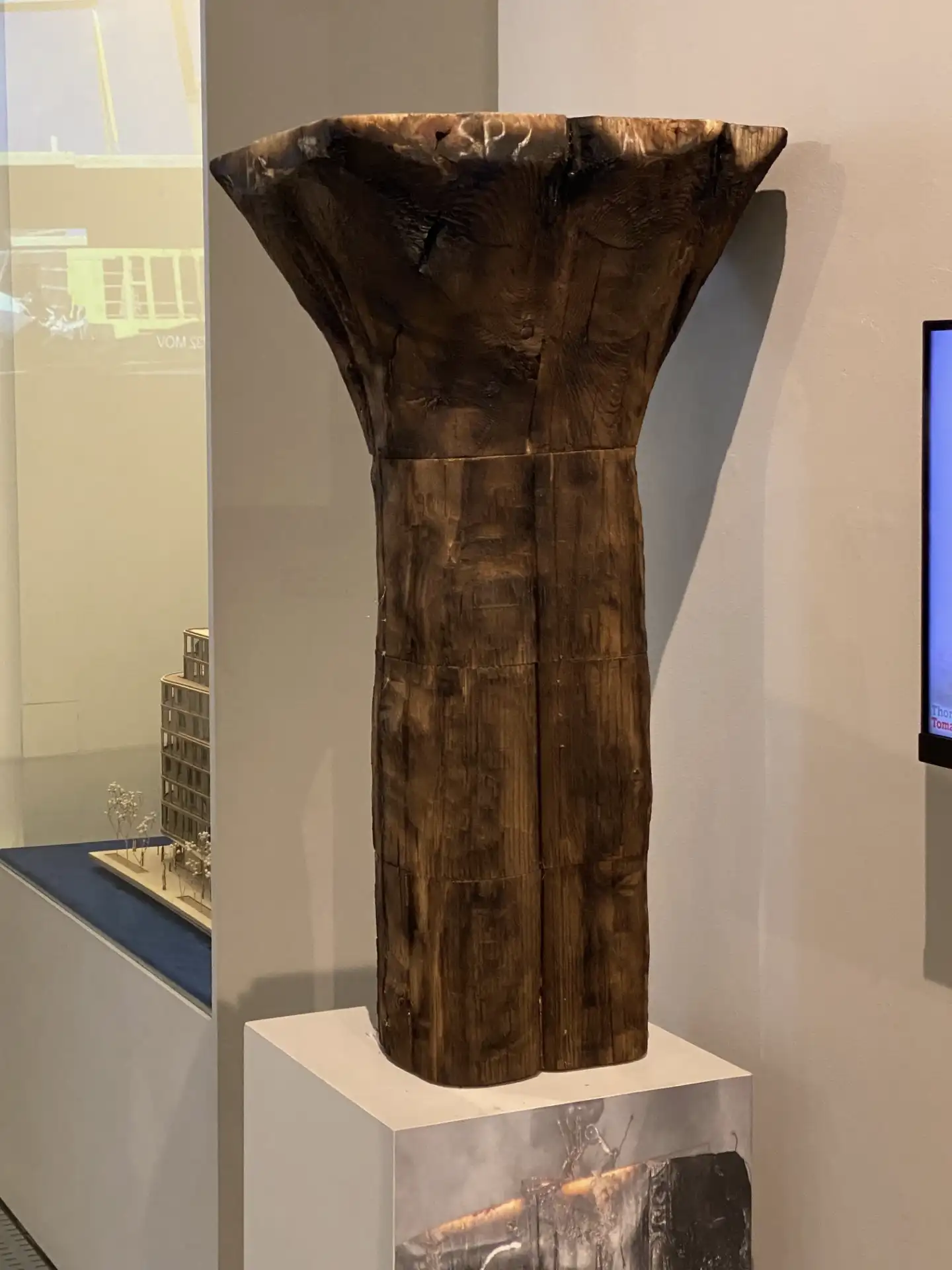
A charred remnant from a controlled burn during fire perfomance testing for Ascent. Photo © Joann Gonchar, FAIA
Other physical objects that add to visitors’ understanding of the material are charred columns—the result of performance fire testing for Ascent in Milwaukee, designed by Korb Associates and completed in 2022. To obtain a construction permit for the residential building, which at 25 stories is still the world’s tallest timber tower, the project team was required to conduct a three-hour controlled burn on the exposed load-bearing wood elements. Along with an accompanying video of the testing process, the remnants on display, one of which has been cut to reveal that the glulam is still intact within its outer layer of char, demonstrate mass timber’s fire-resistive properties.
One of several themes explored by Tall Timber is the role of the Pacific Northwest—with its long tradition of a logging economy—in the rise of engineered wood. The exhibition points out that the region is home to some of the material’s key architectural voices. In addition to LEVER, whose first office was in Portland, Oregon, and now has another in Los Angeles, also highlighted is the work of MGA. The Vancouver-based firm, founded by early mass timber advocate Michael Green, is represented here by a number of projects, including a nine-story residential building under construction in the Paris suburb of Nanterre.
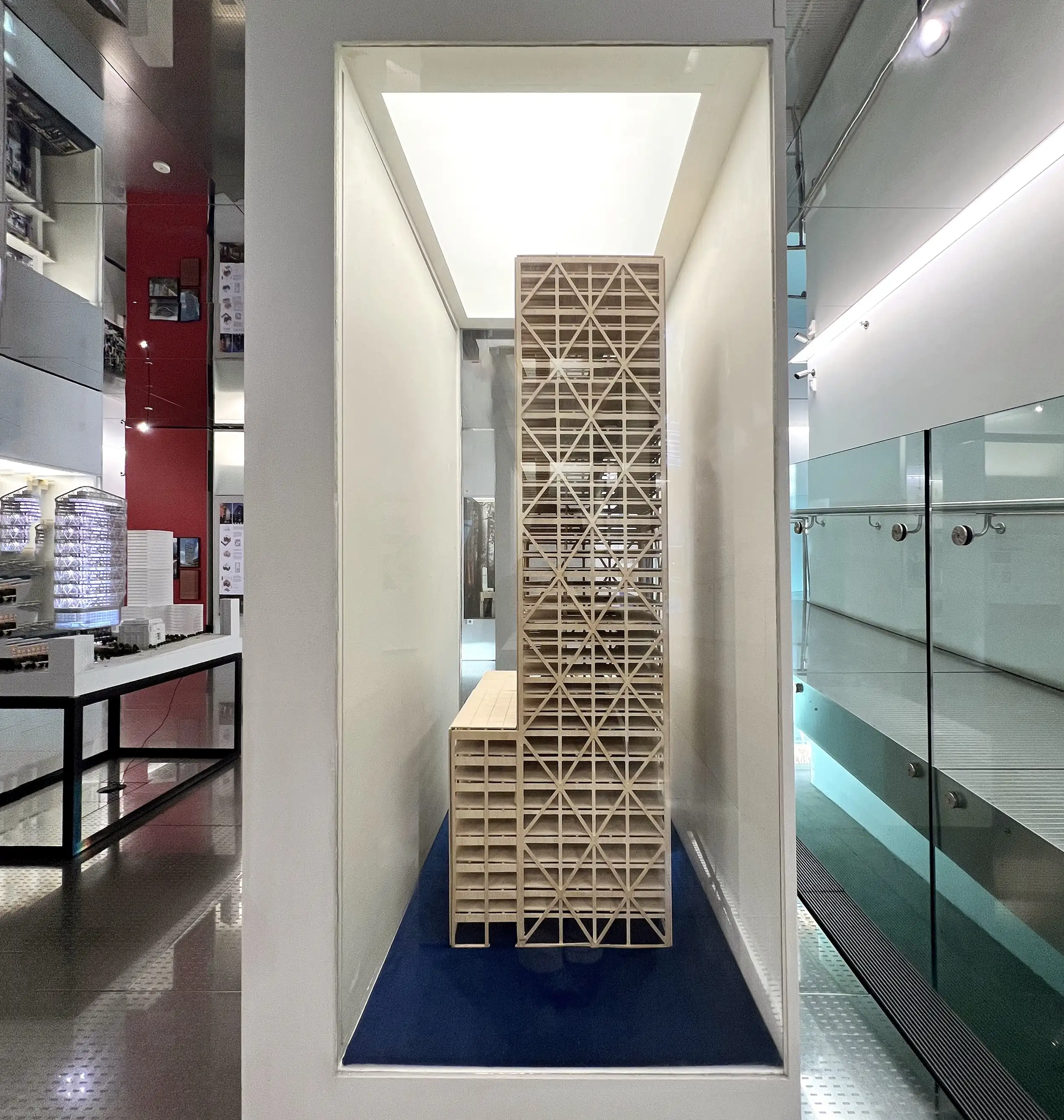
Scale model of Proto Model-X, an conceptual pure-timber project developed by the Toronto office of Gensler. Photo courtesy The Skyscraper Museum
Also featured as part of this influential group is the Seattle firm atelierjones and its Heartwood apartment building—an 8-story, 126-unit workforce housing project in the city’s Capitol Hill district. Completed last year and set to be featured in the May 2024 issue of RECORD, Heartwood is the first U.S. project built as-of-right under new International Code Council provisions for mass timber which atelierjones principal, Susan Jones, helped write.
The exhibition’s only weakness is that it stays clear of prickly issues such as the debate surrounding how much carbon mass timber actually stores. It also avoids tackling—in any depth—what constitutes a responsibly managed forest. But there is only so much one show can take on without risking losing the forest for the trees. All in all, Tall Timber, which will be on view through the end of August, packs in a lot of information, providing an essential overview of the still-emerging construction system and its possibilities.





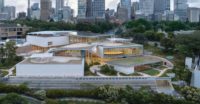
Post a comment to this article
Report Abusive Comment